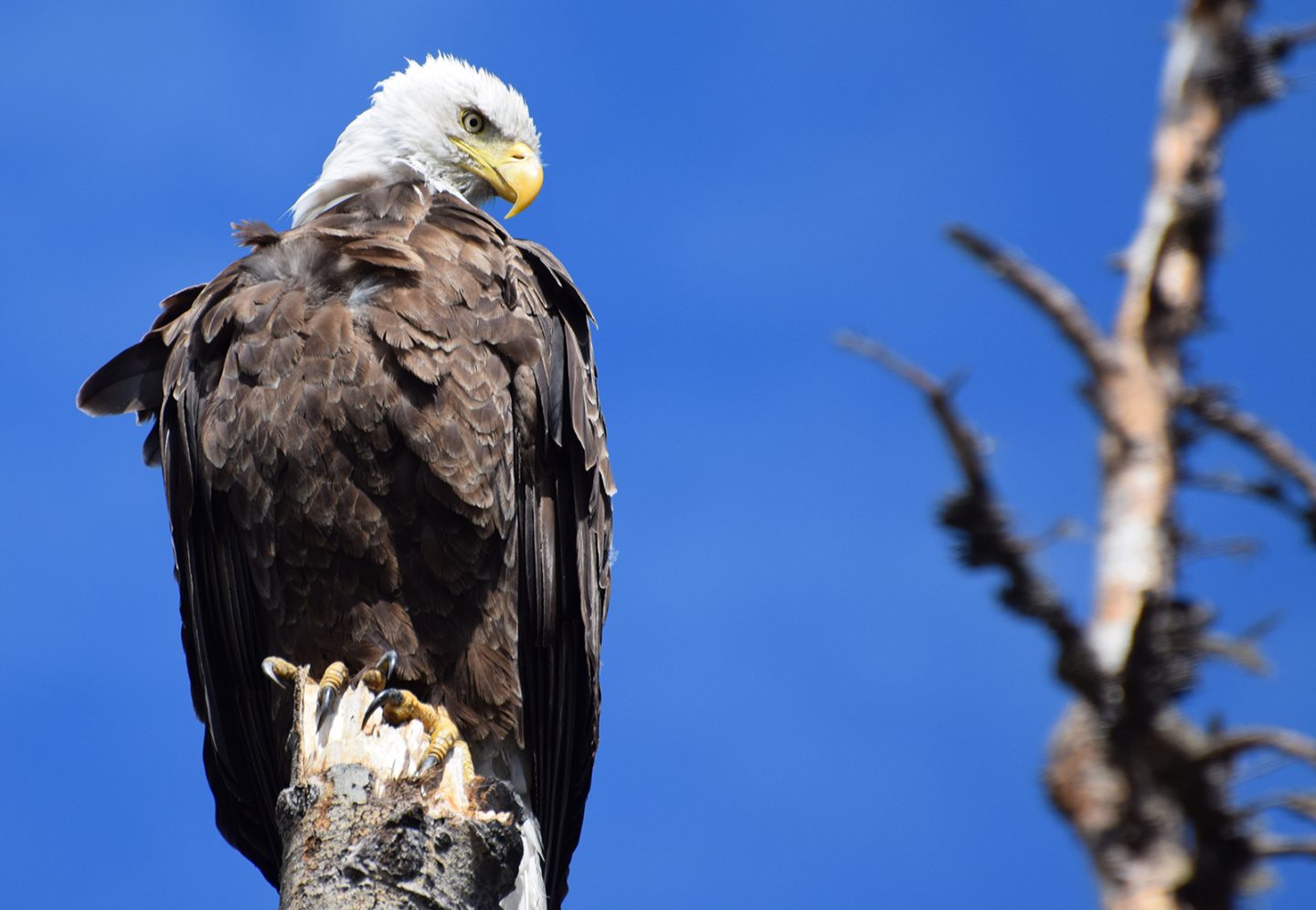A juvenile bald eagle reacts to being banded. (Photo: Elston Dzus)
On the importance of the census
GERRARD: In the mid-70s we realized we needed to know more than just how many nests and young there were — we wanted to know the total population and the different ages. So we developed a “boat census,” taking our boats along alternate eight-kilometre sections of shoreline. The rationale was that if you disturbed an eagle and it flew into the next section, you wouldn’t get into the problem of recounting birds. It also meant that we could survey half the lake and then double the number, which we later adjust slightly depending on the number of active nests counted and so on. That has given us a very reproducible number for bald eagles on the lake.
We use leg bands (and for a few years, patagial [wing] markers) to follow which birds are coming back, and found that we could actually use these resightings as a check on population estimates. It seemed that no one had ever done studies this way before, so we wrote it up and published the study. It provided a correlation that showed that our census numbers were in the right ballpark.
When we started the eagle censuses, we also began monitoring the area’s ducks, gulls, loons, grebes and other waterbirds. Every few years since then we’ve done full lake censuses just to see what was happening long-term. That’s given us data on significant changes in these other populations: for example, ring-billed gulls went up, then came down; Bonaparte’s gulls, which were not plentiful to start with, are now quite plentiful.
DZUS: This comes back to what my Master’s thesis looked at: what are the driving factors influencing higher bald eagle density on different lakes? In my study of Besnard and nearby Nemeiben Lake I compared human disturbance and the amount of suitable nesting habitat between the two lakes, which are only 40 kilometres apart. There wasn’t much difference on those fronts, but what made Besnard so much more productive was its food resources. Two-thirds of it sits on the Precambrian Shield and the bottom third is on the Boreal plain. Nemeiben, for the most part, is on the shield. That means nutrient-rich water flows into the Mercer River from the plains and enters the west side of Besnard Lake. This nutrient loading and higher water quality leads to more invertebrates, which leads to more fish, which leads to more eagles. That kind of data can be applied to comparisons between lakes that have been influenced by human industry, climate change and other factors.
On discovering bald eagle sex-regulation
GERRARD: Gary Bortolotti, an avian biologist who started coming to Besnard Lake in the mid-70s, based his PhD thesis on the problem of distinguishing between male and female young in the nest. They’re very similar in appearance, and although we knew females were bigger than males, we didn’t have a way of clearly differentiating between them. Bortolotti measured a lot of museum specimens with known sexes as well as the young on Besnard lake, and he found a clear separation.
Interestingly enough, what proved to be most important was the length of the foot pad on the talon and the depth of the beak. Combining those two measurements provided a very accurate separation of males and females. With that information, Bortolotti started climbing trees to study nests that had eggs and very small young, and followed them all along. Now, you would predict there would be equal numbers of males and females in both the first and second waves of hatchlings, but in the years he was performing his study, which were very productive in terms of chicks, it turned out that there was an excess of females hatching first and males second. When Elston later looked at less productive Nemeiben lake, he found more males first and females second. Those ratios have held true for good years and bad years on Besnard.
Why is that? One presumes that where there’s more prey, there’s an advantage to having females hatch first, because they’re larger and require more food as they’re being raised. In poorer years or habitats, there’s an advantage to having males first because they require less food and less energy. What we found was a fascinating apparent ability of bald eagles to regulate the sex of their first young in particular, depending on the conditions of the lake.









